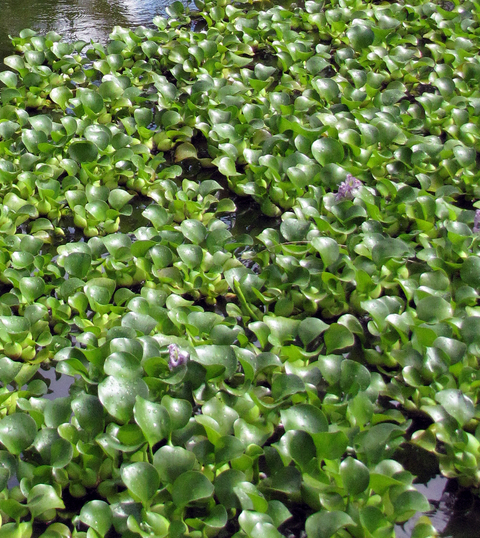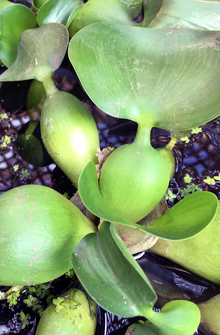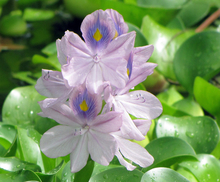Quick facts
Water hyacinth is a regulated invasive species. Species are legal to buy, sell, transport, and possess, but may not be introduced into a free-living state, such as released into public waters.
- Water hyacinth can produce large floating mats of dense vegetation, which reduce light penetration, impede recreation, and produce mosquito breeding habitat.
Water hyacinth should be reported. See the Minnesota Department of Natural Resources recommendations for reporting invasive species.
How to identify water hyacinth
- Water hyacinth (Eichornia crassipes) is a free-floating plant with clusters of waxy leaves.
Leaves
- Broad, rounded leaves with inflated bases form free-floating rosettes.
- Leaves are glossy, and can be up to twelve inches long from base to tip and up to six inches wide.
Flowers
- Showy purple flowers in clusters on a spike held above plant.
- Upper lobe has darkened spot with a yellow center.
Roots
- Long, dark roots dangle below the plant.
- Roots are highly divided and feather-like in appearance.
Reviewed in 2019




